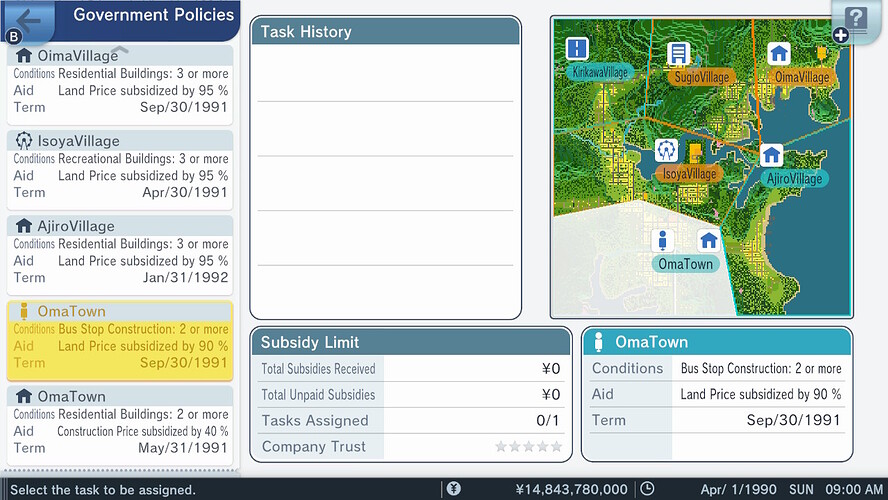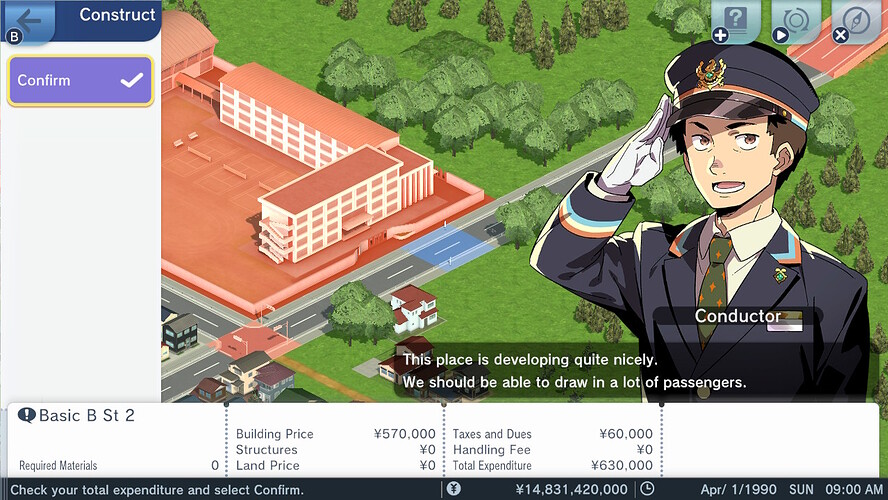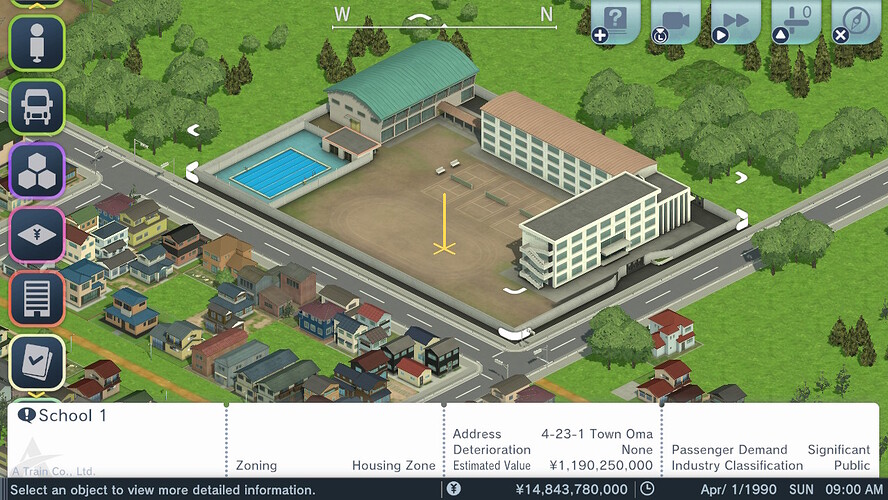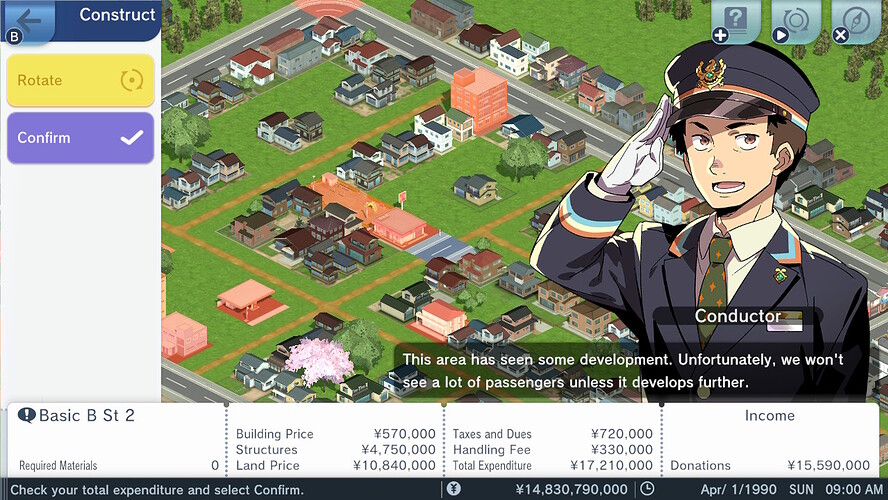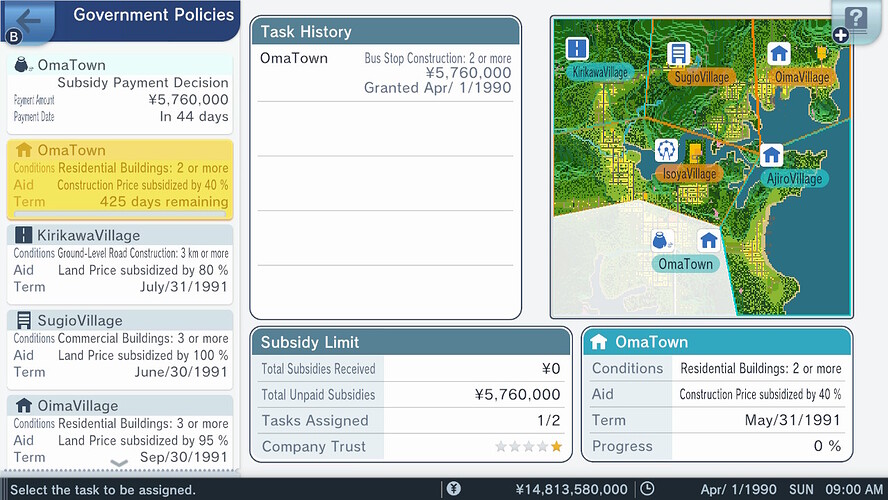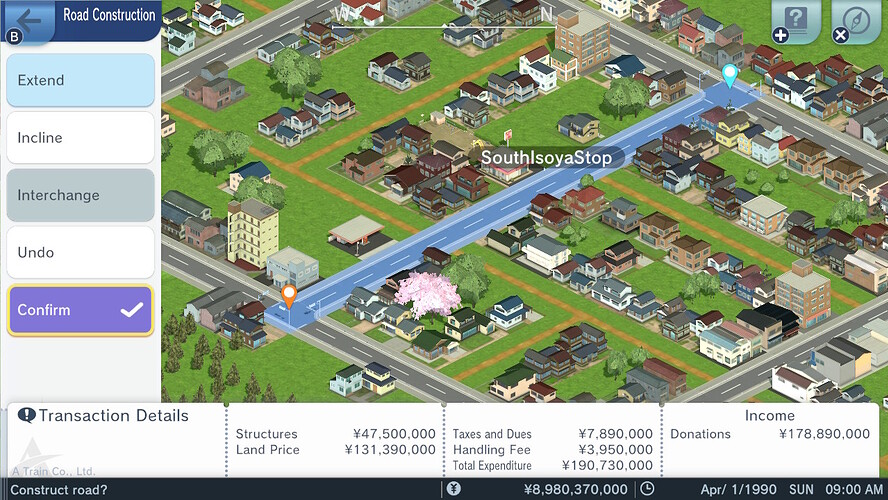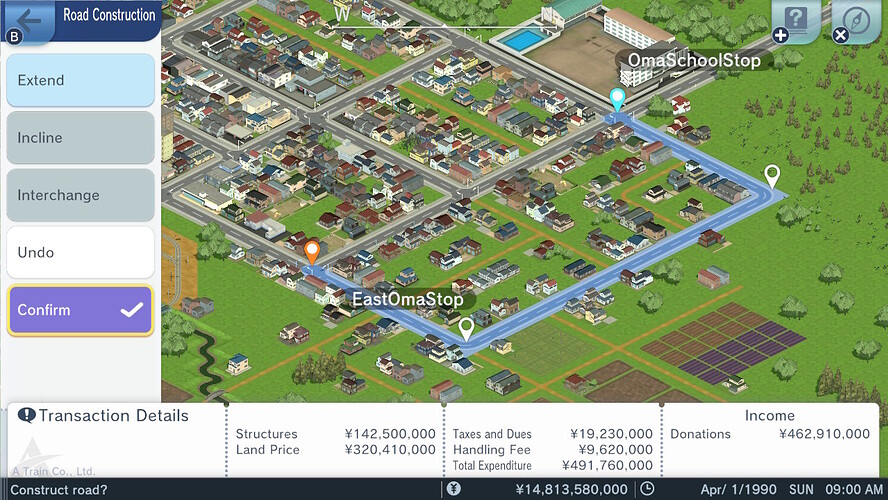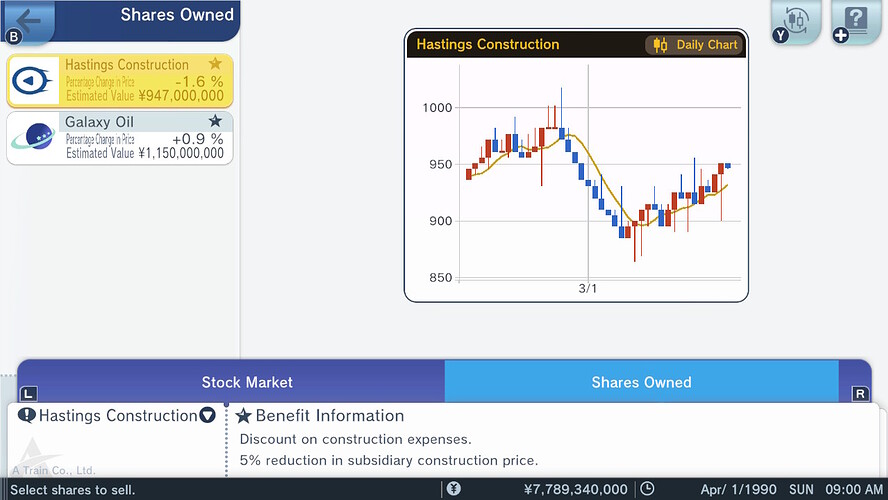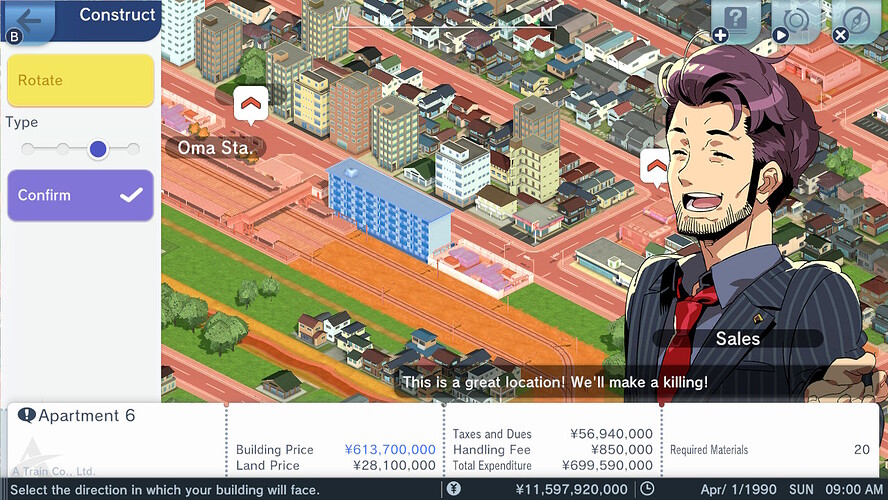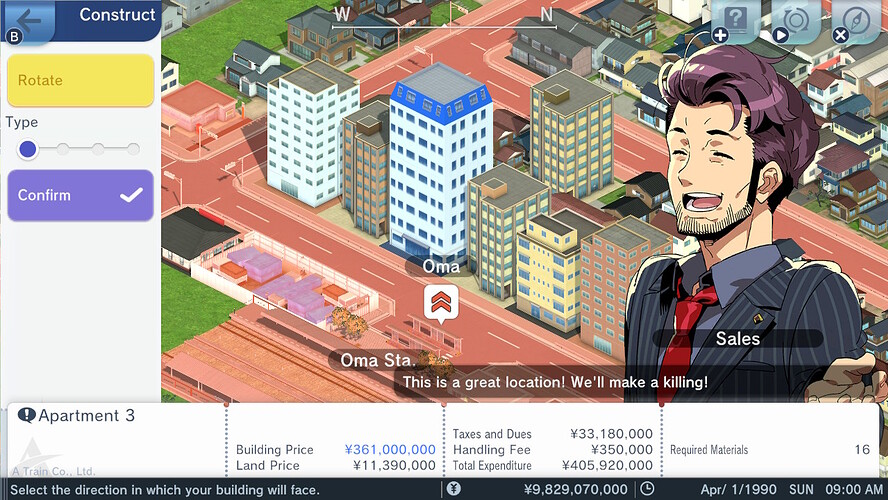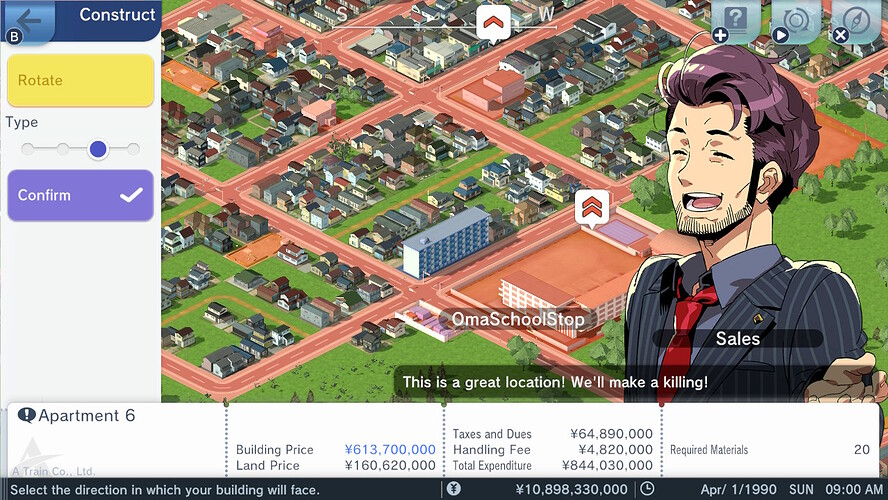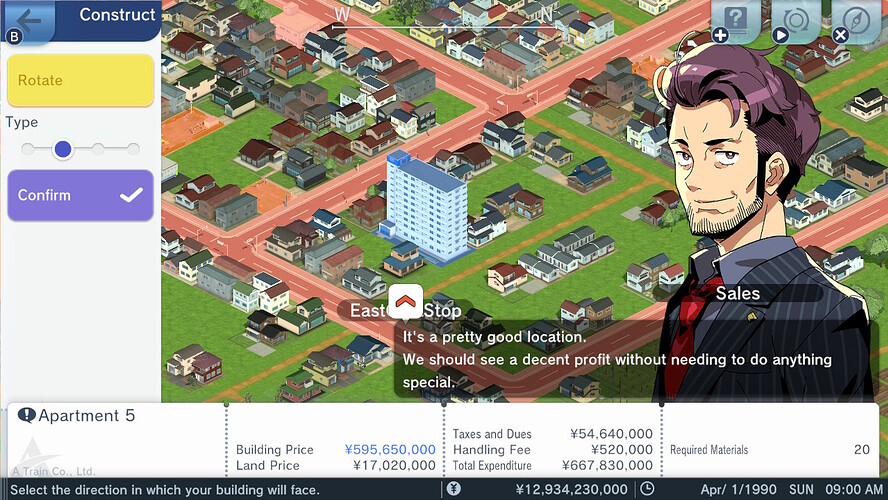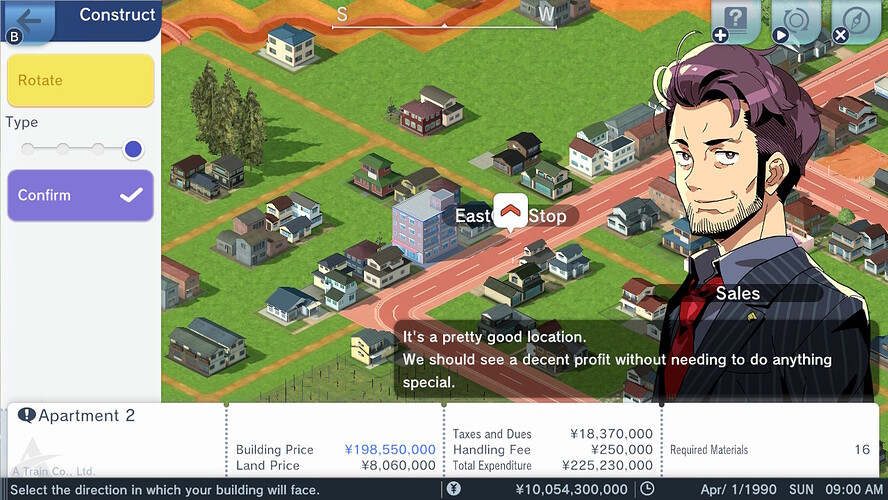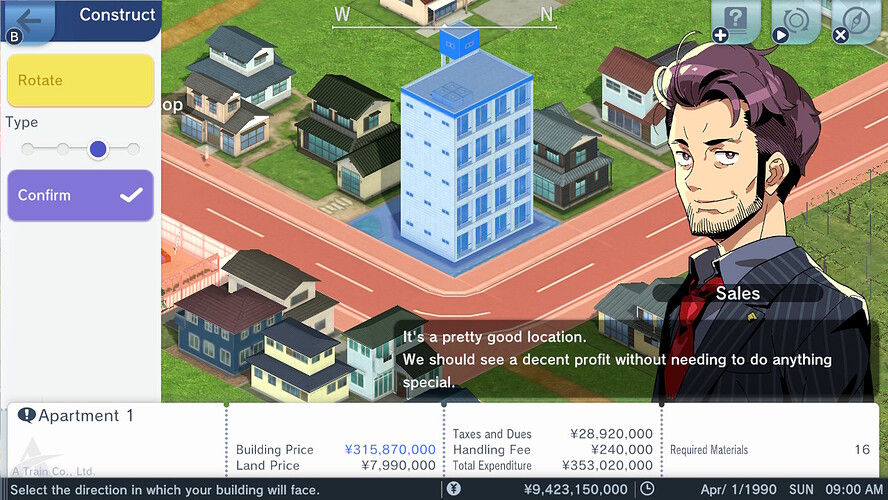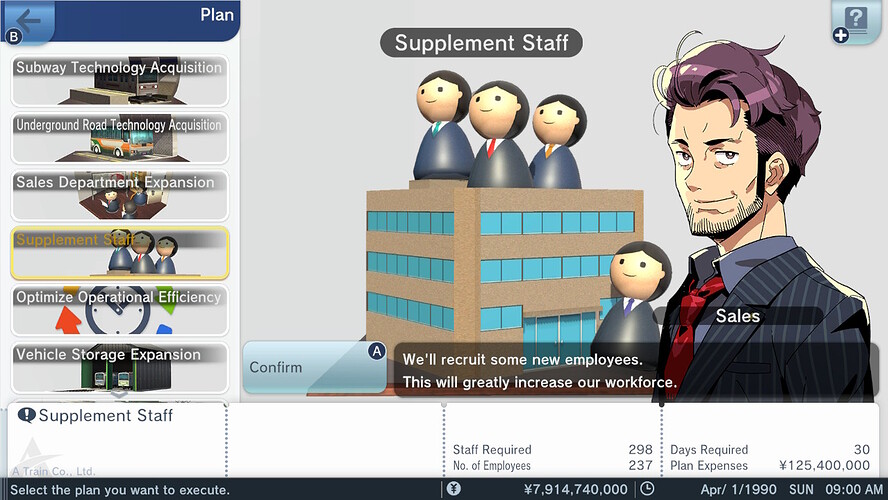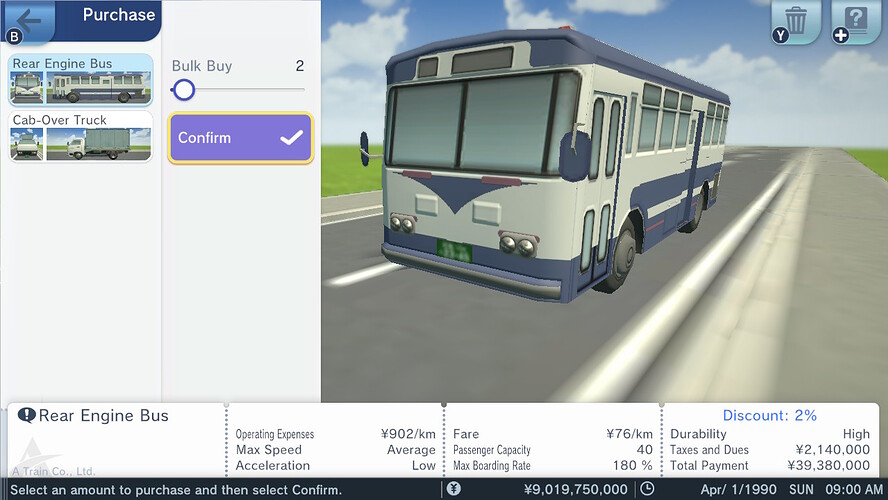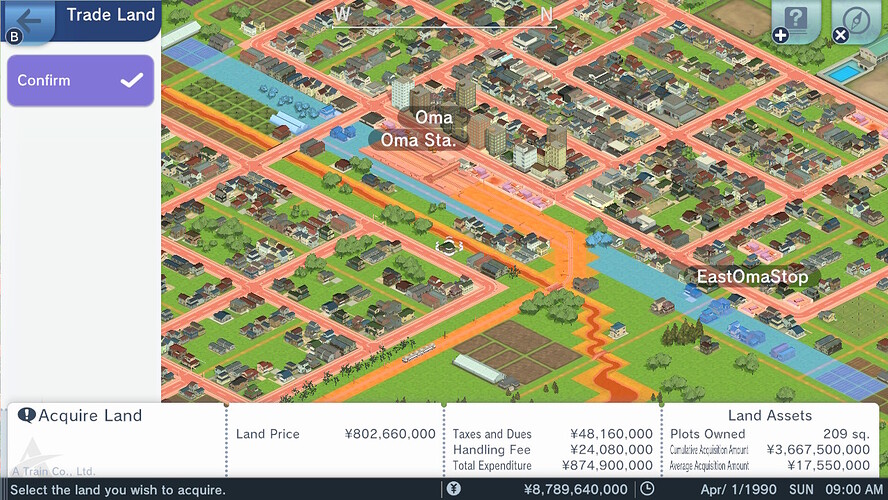Strike while the iron is hot, as they say! Back with yet another installment of dinking about in A-Train: All Aboard! Tourism. Hope everyone brought their construction helmets and high-vis vests because we are breaking ground on a construction bonanza.
Please have your tickets ready for inspection by the conductor and prepare to board today’s train, as our railroading adventure in City of Hopes & Dreams continues!
Let’s Play City of Hopes & Dreams - Planting synergistic bonds for the future…
Click to reveal...
Welcome back to A-Train: All Aboard! Tourism and our let’s play of the City of Hopes & Dreams scenario. Our plucky little private railroad corporation has grand plans for the region and today we will be embarking on some of those plans. Today is all about making use of government subsidies, shareholder benefits, and some good old profit motivated transit-oriented development.
Our focus for today will predominantly lie within the Oma district as we make use of two subsidies currently being offered by the local government. Since we can only take on one subsidy concurrently at the moment we will begin with the subsidy for the construction of two or more bus stops within the Oma district. In return for completing this target the local government will subsidise 90% of any land acquisition costs we incur.
Thus, we set about constructing a new two-way bus stop to the east of Oma Station. We’ll make use of the existing road alignments and build the bus stop in line with the road that runs past Oma Station. Since we’re not building on a pre-existing paved road the construction of this bus stop will involve some land acquisition costs, totaling 6,390,000 Japanese Yen.
Next we will construct a bus stop next to the school in Oma Town. Since this will be construct on pre-existing paved roads there will be no land acquisition costs involved. While this means that we will not receive any subsidies for the construction of this bus stop, the location of the bus stop will more then compensate for it.
Selecting the school building will bring up its information panel at the bottom of the screen. Here we will notice that the Passenger Demand rating is Significant. As a result, ridership both to and from the school should be high once it is serviced by a good transportation network. Something we are very much planning to offer, as school services can be quite the nice revenue generator for buses.
While it will not be eligible for the local government subsidy we have signed up for, due to existing outside Oma district, we will also construct a bus stop in the middle of Isoya village. To my knowledge, bus stops have a catchment radius of 10 grid squares, so a diameter of 20 grid squares. Thus, constructing our bus stop in the middle of Isoya village should provide us with good catchment of the local population. Since our bus route from Oma Station to Iberia Land passes through Isoya village it makes sense to incorporate the population of Isoya into our company’s service area and pool of potential customers.
That completes our bus stop construction spree for the time being. Which means that we have met the target of the local government subsidy we signed up for. Thus, we can expect to receive 5,760,000 Japanese Yen from the local government within a period of 44 days. And while we are here, we will now sign up for the subsidy targeting the construction of two or more residential buildings within Oma District. Thereby, allowing our company to recoup 40% of the construction price when building residential subsidiaries.
Before we begin the construction of any residential subsidiaries though, we will first construct some paved roads in Isoya and Oma to connect up our freshly built bus stops.
Due to our company owning over one million shares in Hastings Construction at the beginning of the scenario we will also receive a 5% reduction to subsidiary construction costs. This shareholder benefit in combination with the local government subsidiary we signed up for will help our company substantially reduce our capital expenditure.
Now to get underway with our planned residential construction spree in Oma district! We shall begin right in the middle of town next to our train station and bus stop. Our goals are to increase the number of potential passengers, by raising the local population, and to develop the empty land surrounding Oma Station, potentially selling off the freshly constructed buildings at a profit. Just because we are a railway company that does not mean we cannot get involved in the property development industry as a side-business.
If you remember back to our first let’s play, of the All Aboard Tourism scenario, you might remember that buildings of the same type (i.e., Apartment 5) can have a negative influence on each other when placed too close together. Therefore, we will place this next subsidiary on the other side of Oma Station several grid squares away from our other Apartment 5 building. Whilst the beneficial influence of the nearby train station and bus stop will not be quite as high we do gain the beneficial influence of the nearby police station.
Next, we will switch from constructing the Apartment 5 type of residential subsidiary to the Apartment 6 type. Firstly, this will perfectly fill in the three grid square space between Oma Station and our new construction site. Secondly, we will experience fewer potential issues with negative influences due to Apartment 5 and Apartment 6 counting as different types of residential building for the purposes of building synergies.
Finally, we will fill in the small vacant lot across the road from the Oma station precinct with yet another type of apartment building. Again our company has chosen a different building type, in this case the Apartment 3 type, to minimize any potential issues with negative building influences. The size of the lot was also a factor in our choice since the proposed construction site was just one solitary grid square in width and length.
Now we will move onto constructing a couple of residential subsidiaries close to our new Oma School bus stop. Similar to before, our first goal is to increase the number of potential passengers, by raising the local population. Secondly, by developing the empty land surrounding Oma School our company also hopes to potentially profit off the real estate market in the future.
Once again we switch up building types to minimize any potential issues with negative building influences. Our first residential apartment looks set to strike a strong beneficial synergy with the nearby bus stop and school. Meanwhile, our second apartment building also gains a beneficial effect from the presence of a nearby fire station.
Afterwards, we move onto establishing some new residential subsidiaries for the same reasons as stated previously. Due to the area being less developed than the core of Oma Town, and lacking the presence of a school or other popular attractions, our company sets about constructing four new subsidiaries in the local area surrounding the East Oma bus stop. Due to the current status of the local area we will also start out by constructing some of the cheaper types of residential subsidiaries, as there likely won’t be enough initial demand to warrant bankrolling several massive apartments.
As a consequence of our construction spree we can expect our required workforce to balloon. Since our company is already lacking sufficient workers to cover all our current tasks, without effecting employee workload and happiness, we will set about recruiting more staff. After the 30 day recruitment process has been completed our company should hopefully edge closer to having the recommended number of employees, which is a total of 298 employees currently.
Next, our company will purchase two more buses to operate along our extended bus service from Oma Station to Iberia Land. The bus route will be amended to encompass the new stops of East Oma, Oma School and South Isoya. Consequently, the the one-way journey time has been increased to just under three hours. Hence, the new buses will be useful in ensuring that service frequency remains decent despite the added journey length.
Alas, that concludes the chronicling of our business adventures for today. I do hope you can join me next time as we continue establishing the roots of our business strategy for the region. Our goals for the first year of operation are lofty and there is still much to be done. However, before we depart our separate ways I shall leave you with a teaser of what is yet to come, as our fledgling company turns its sights to expansion of the railway network.
Until the next time we met aboard the A-Train, I hope you have a safe and enjoyable journey!
